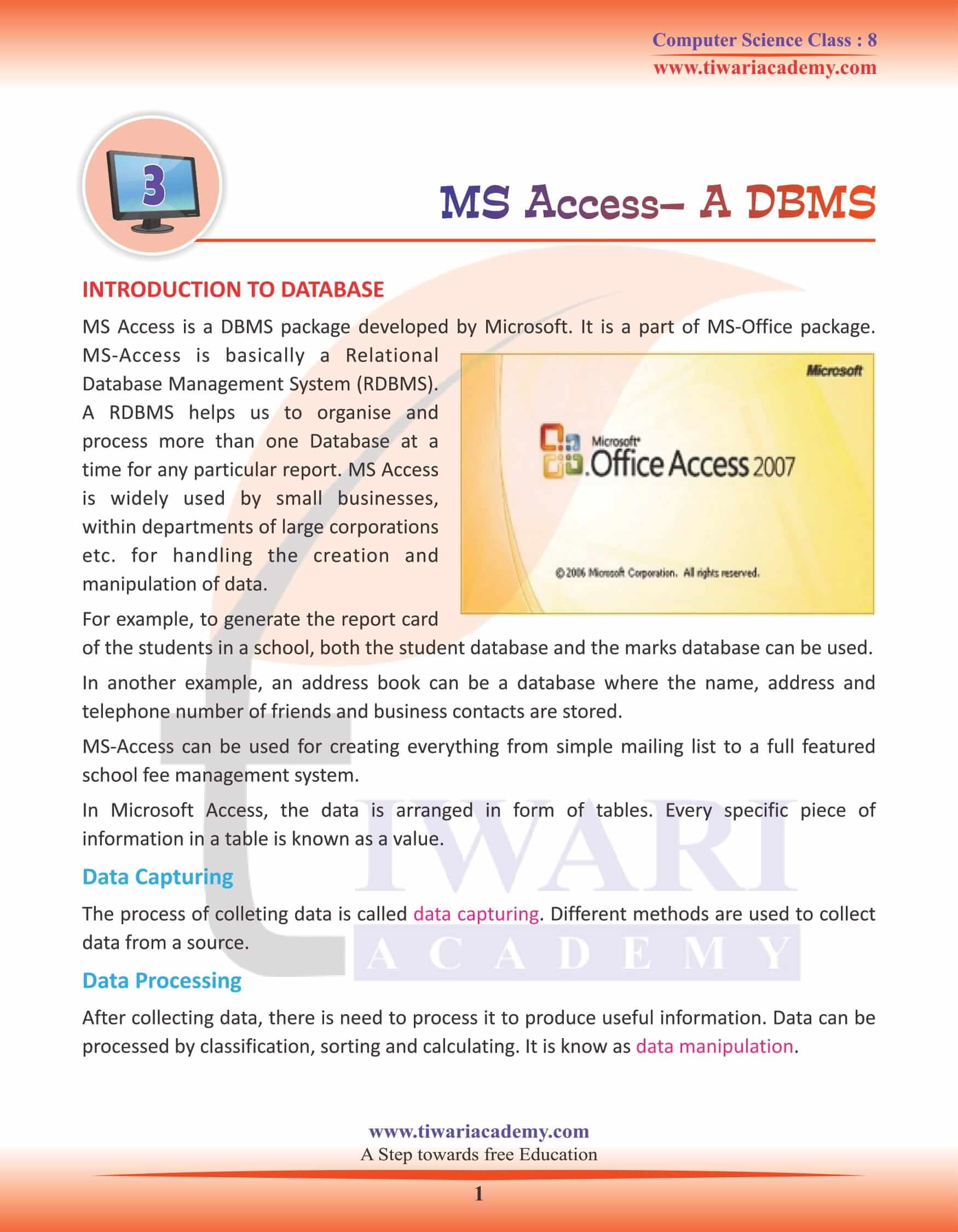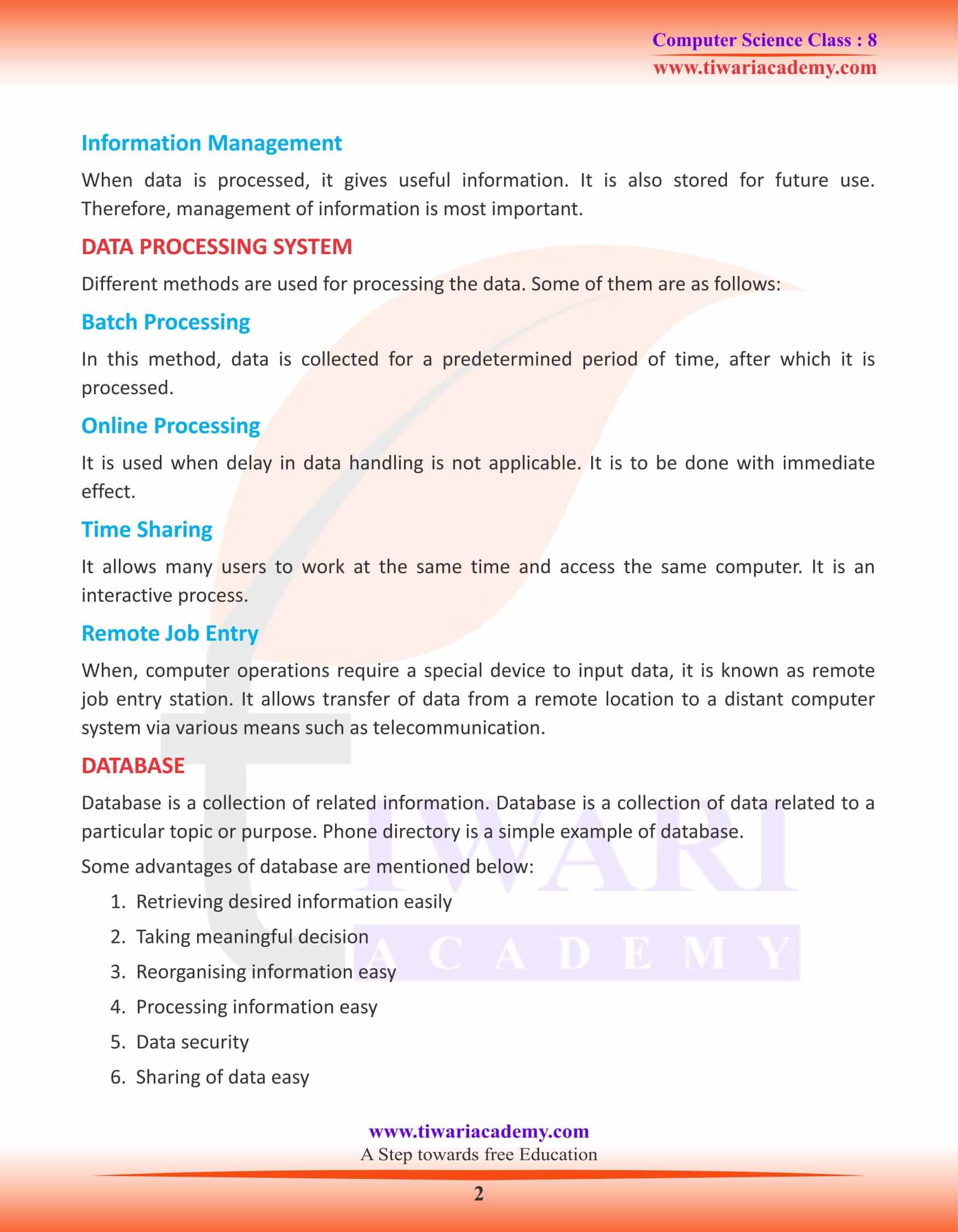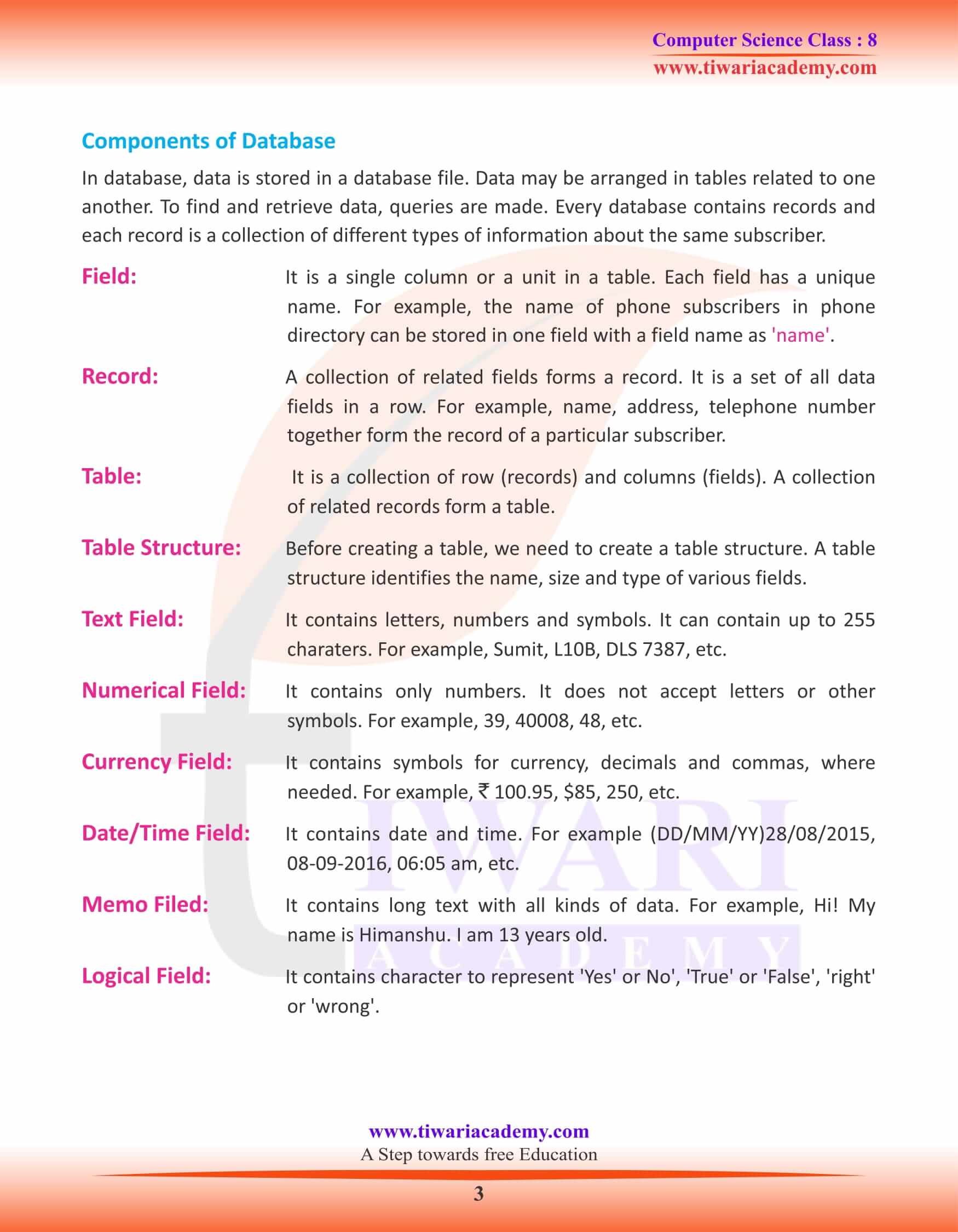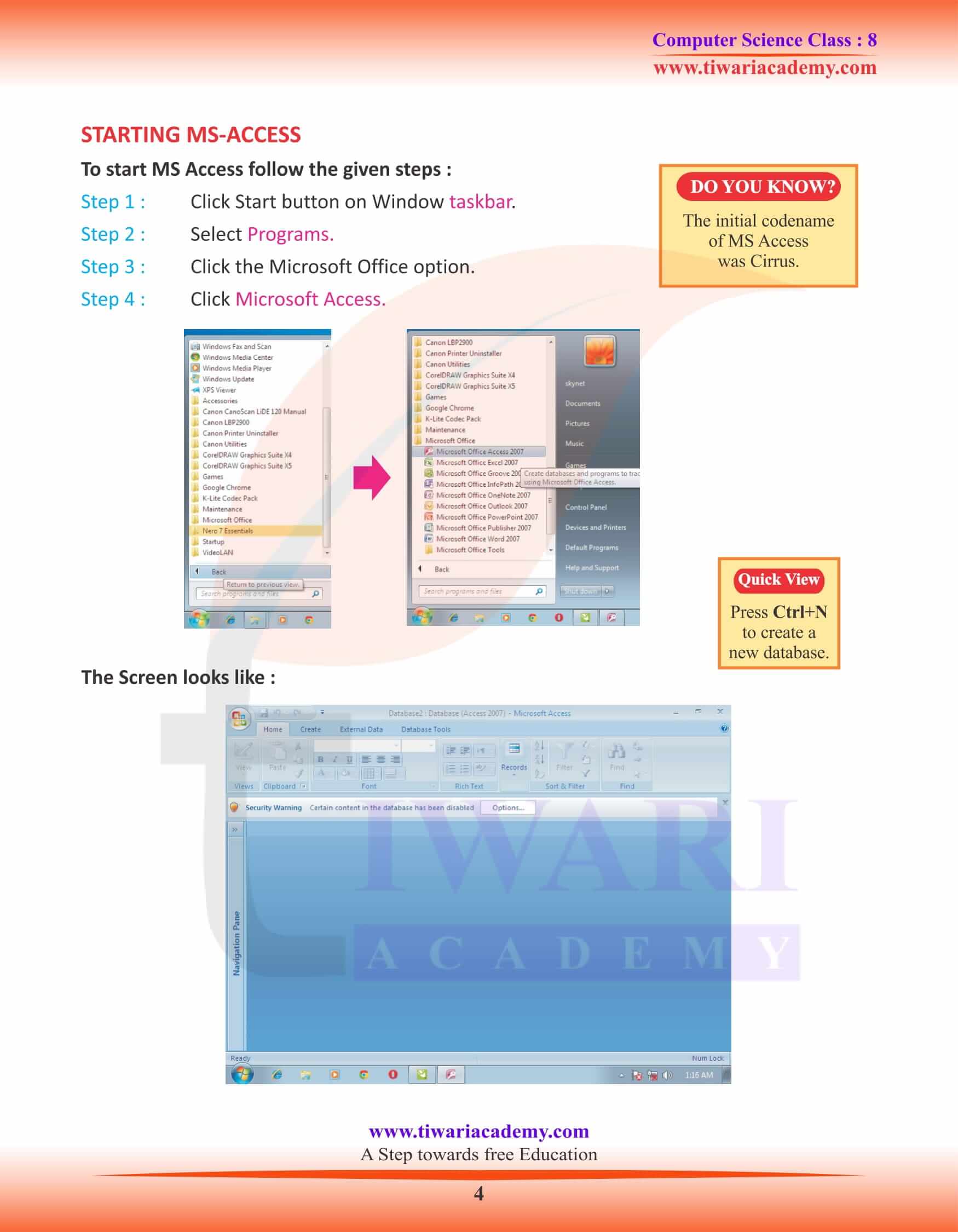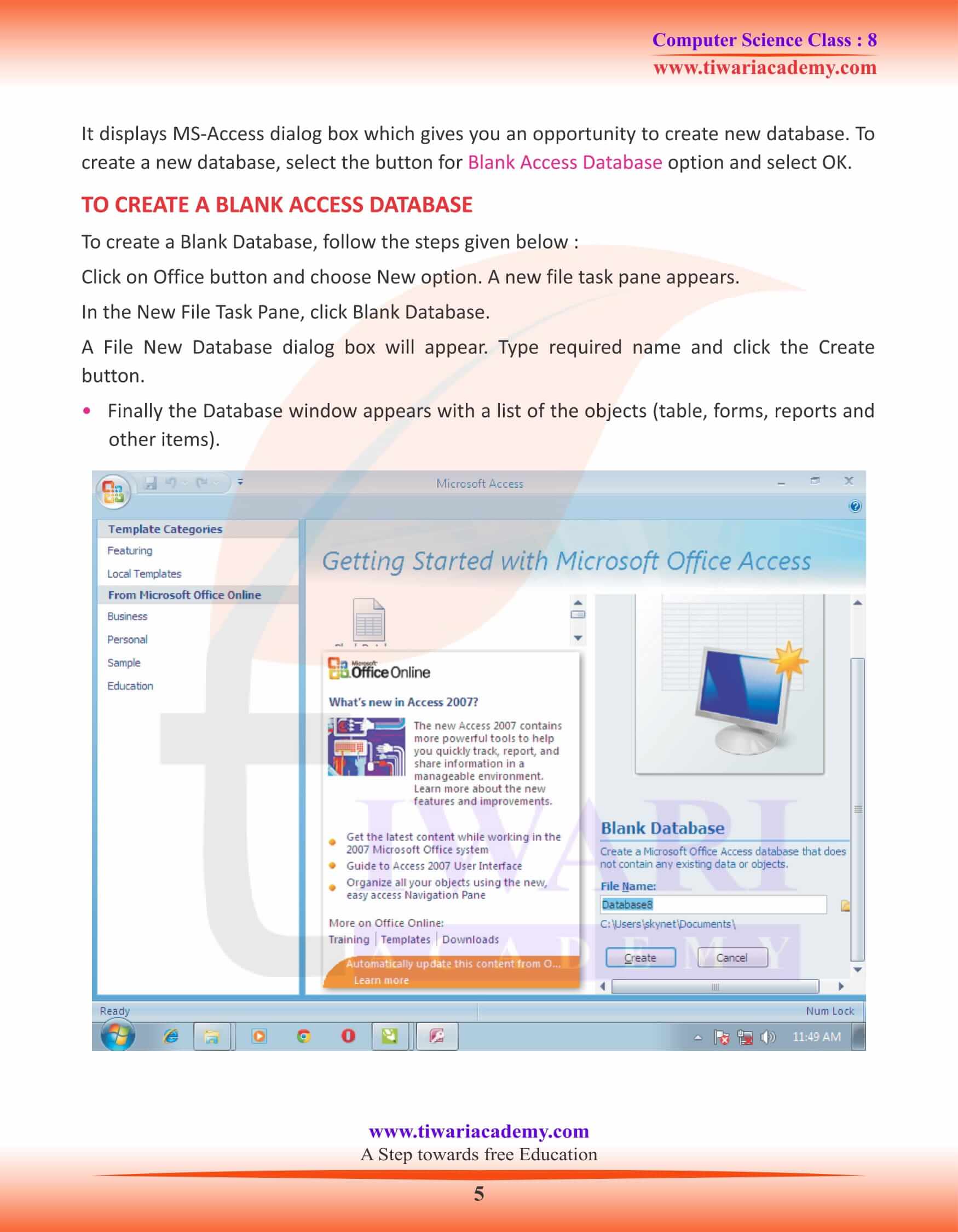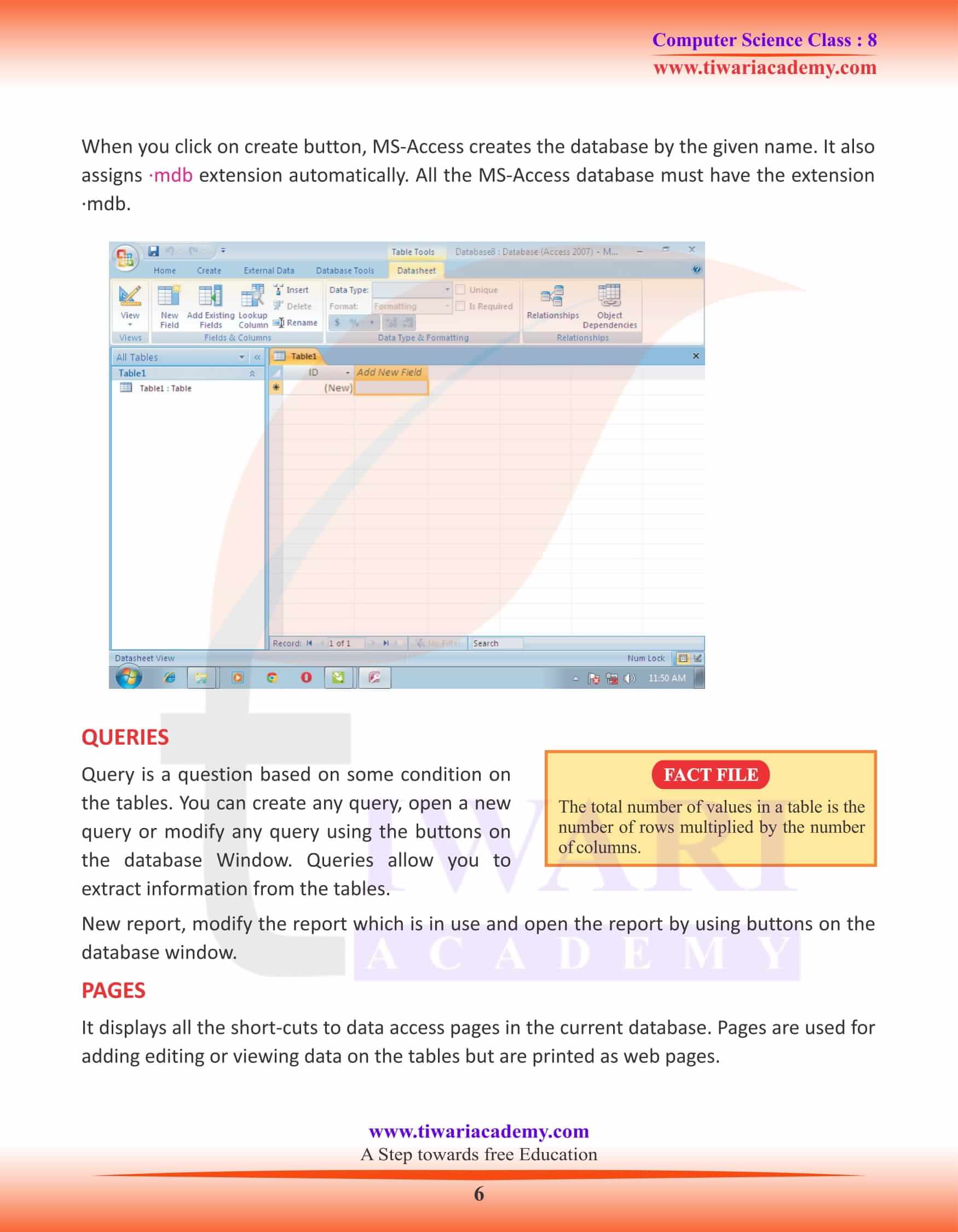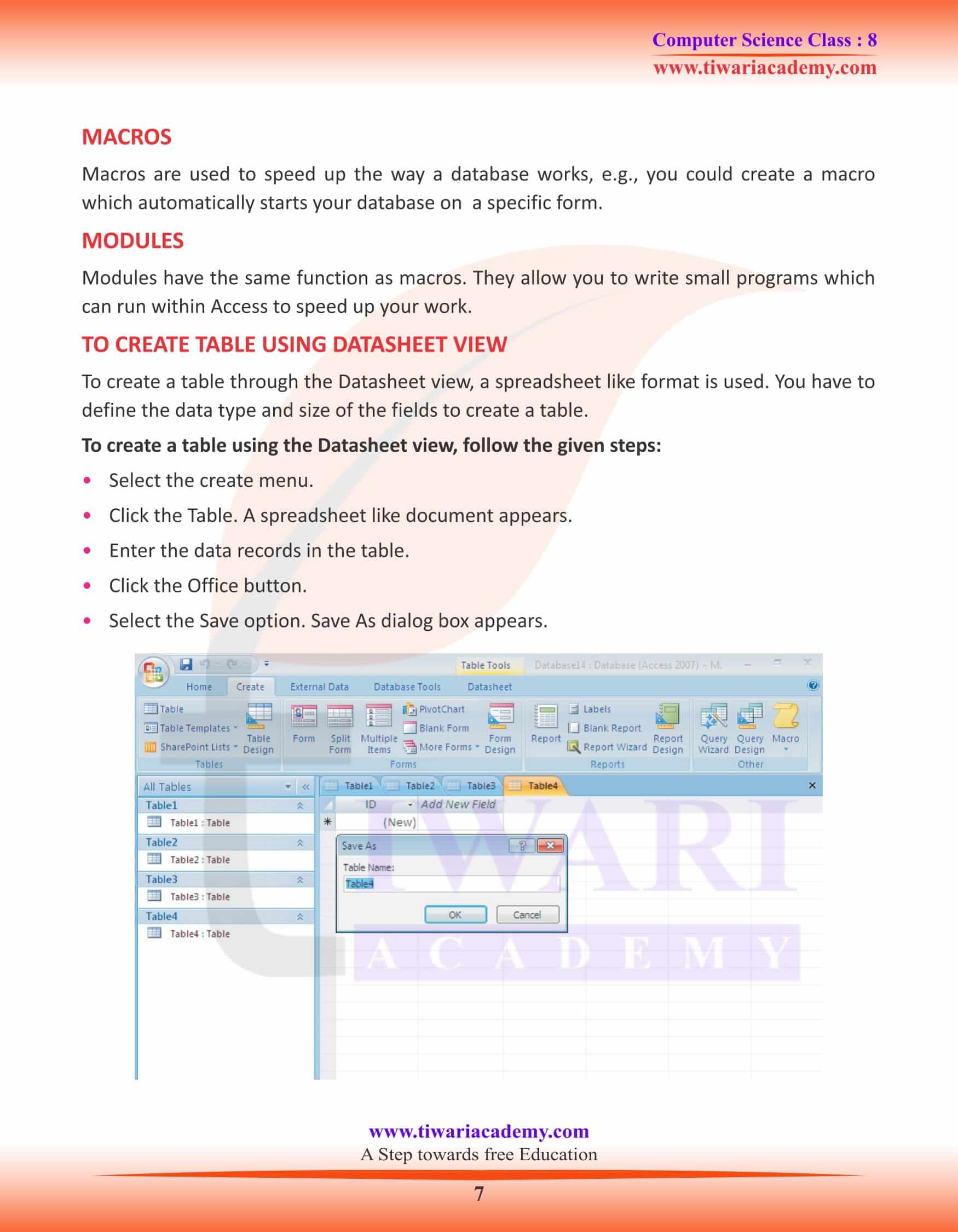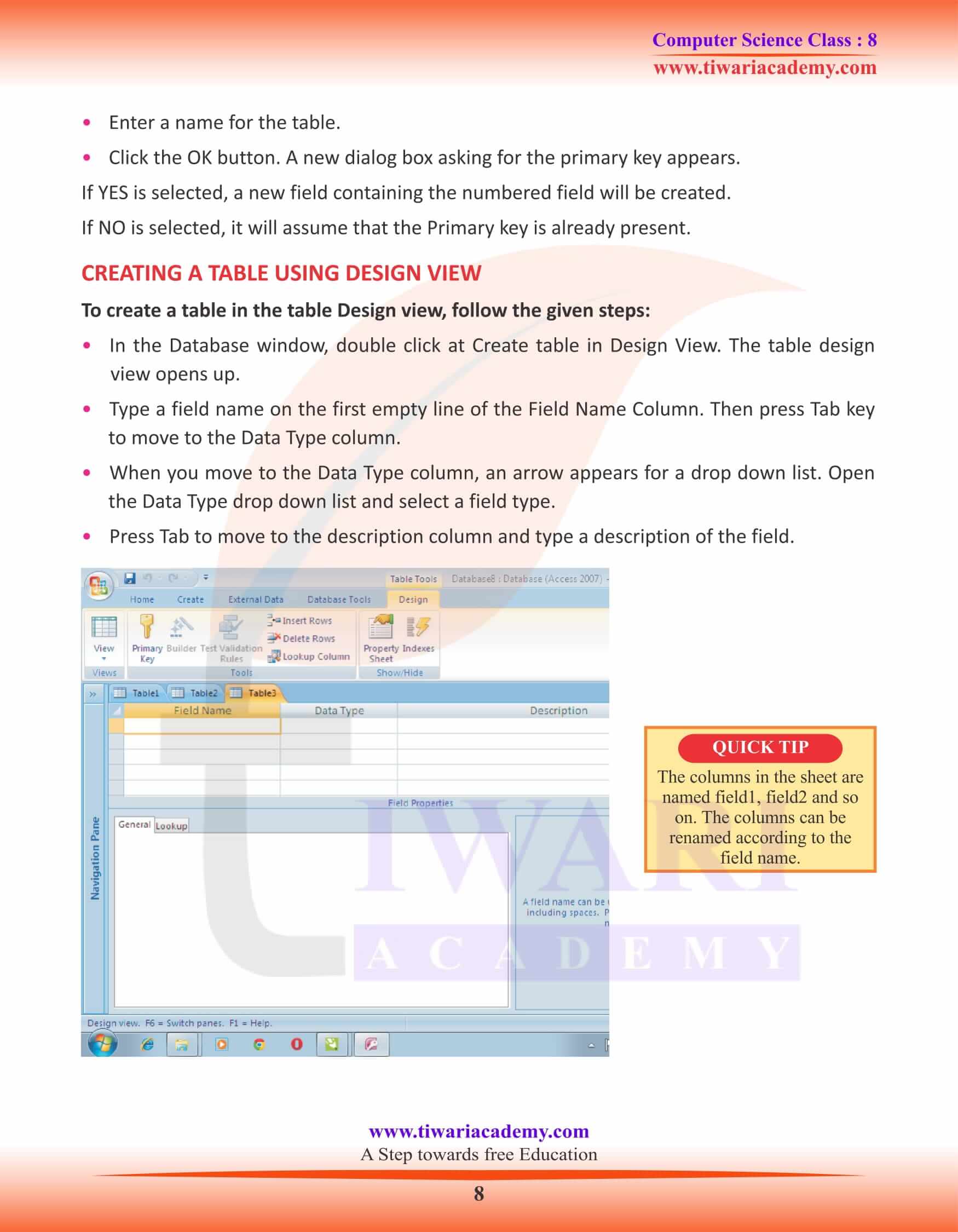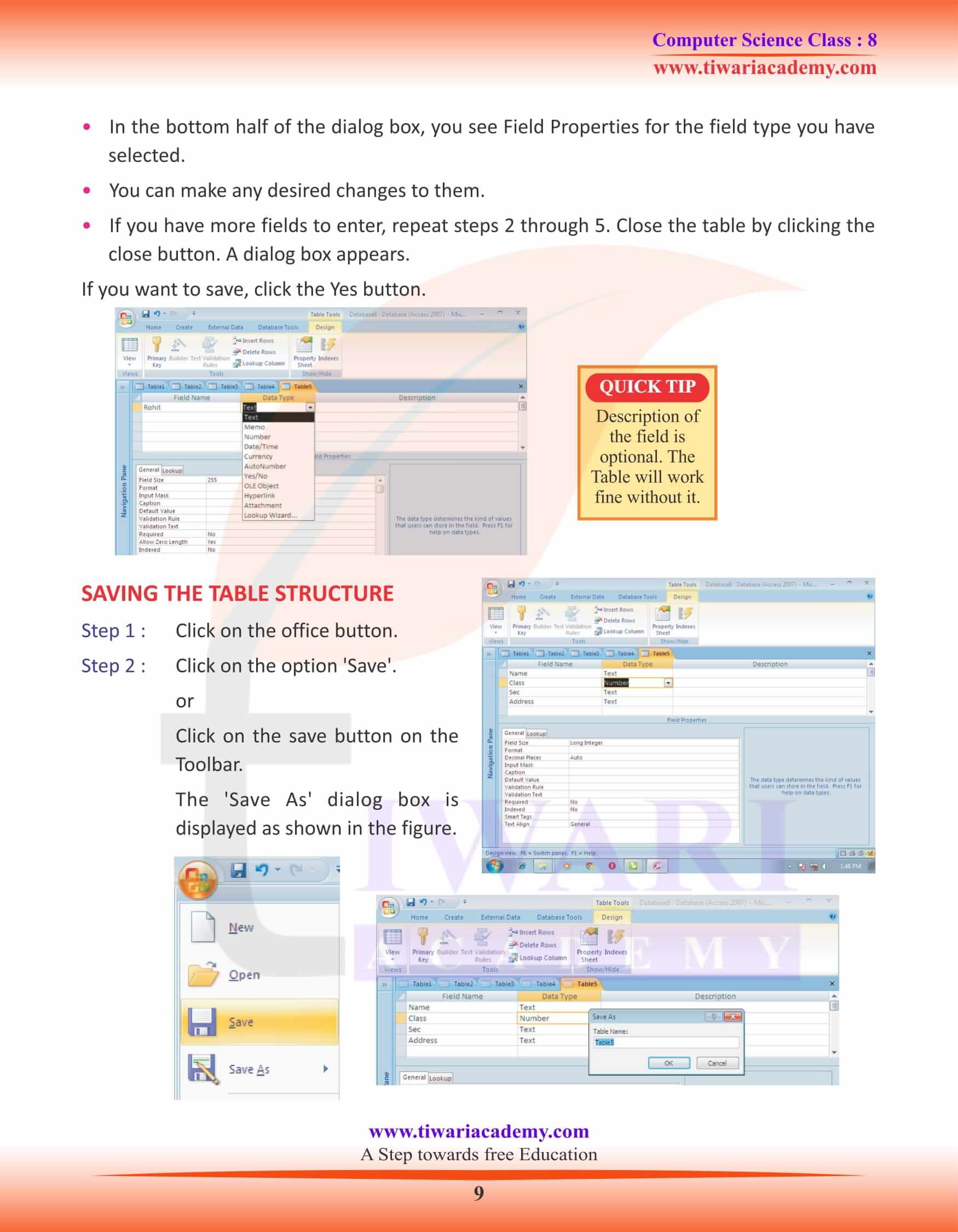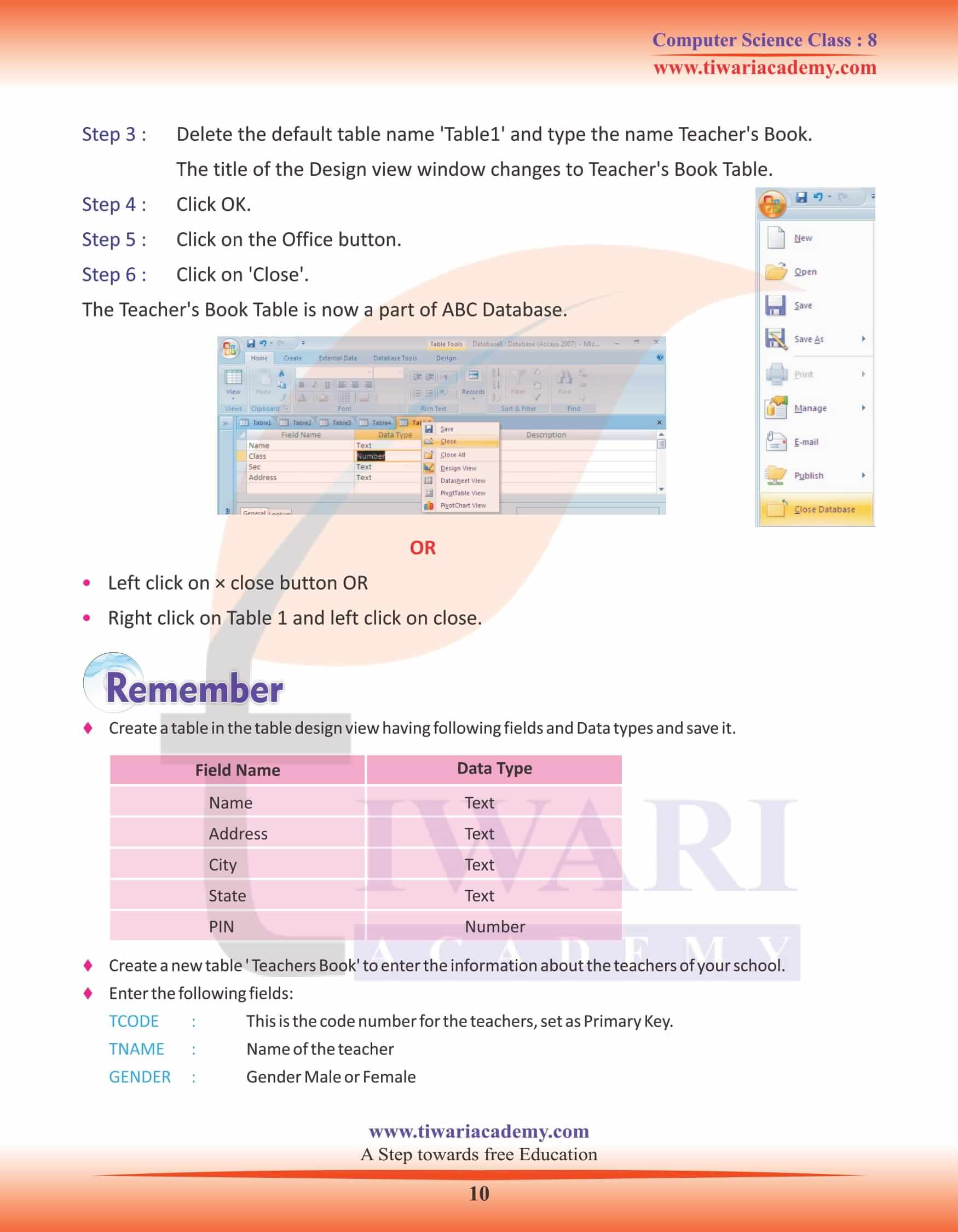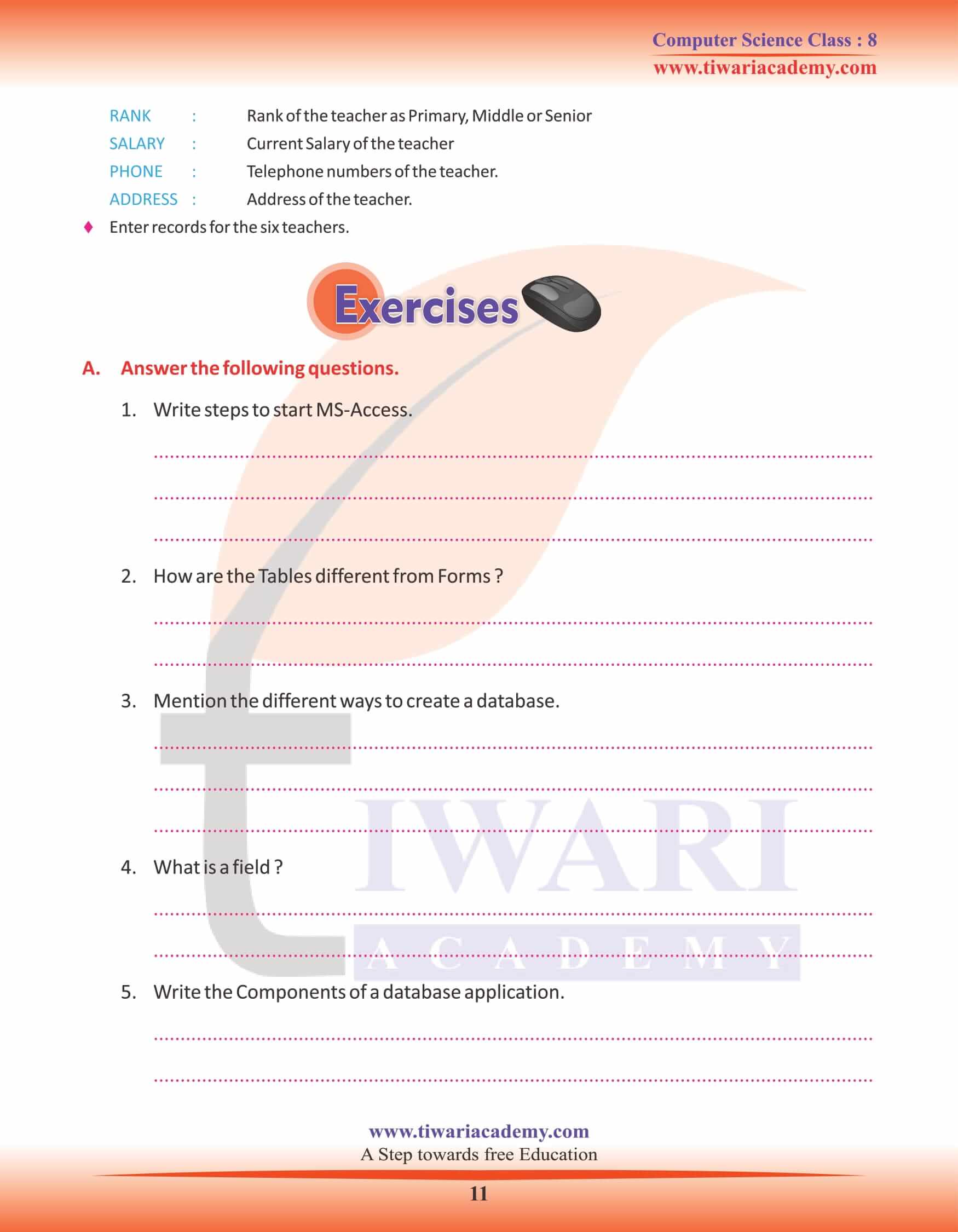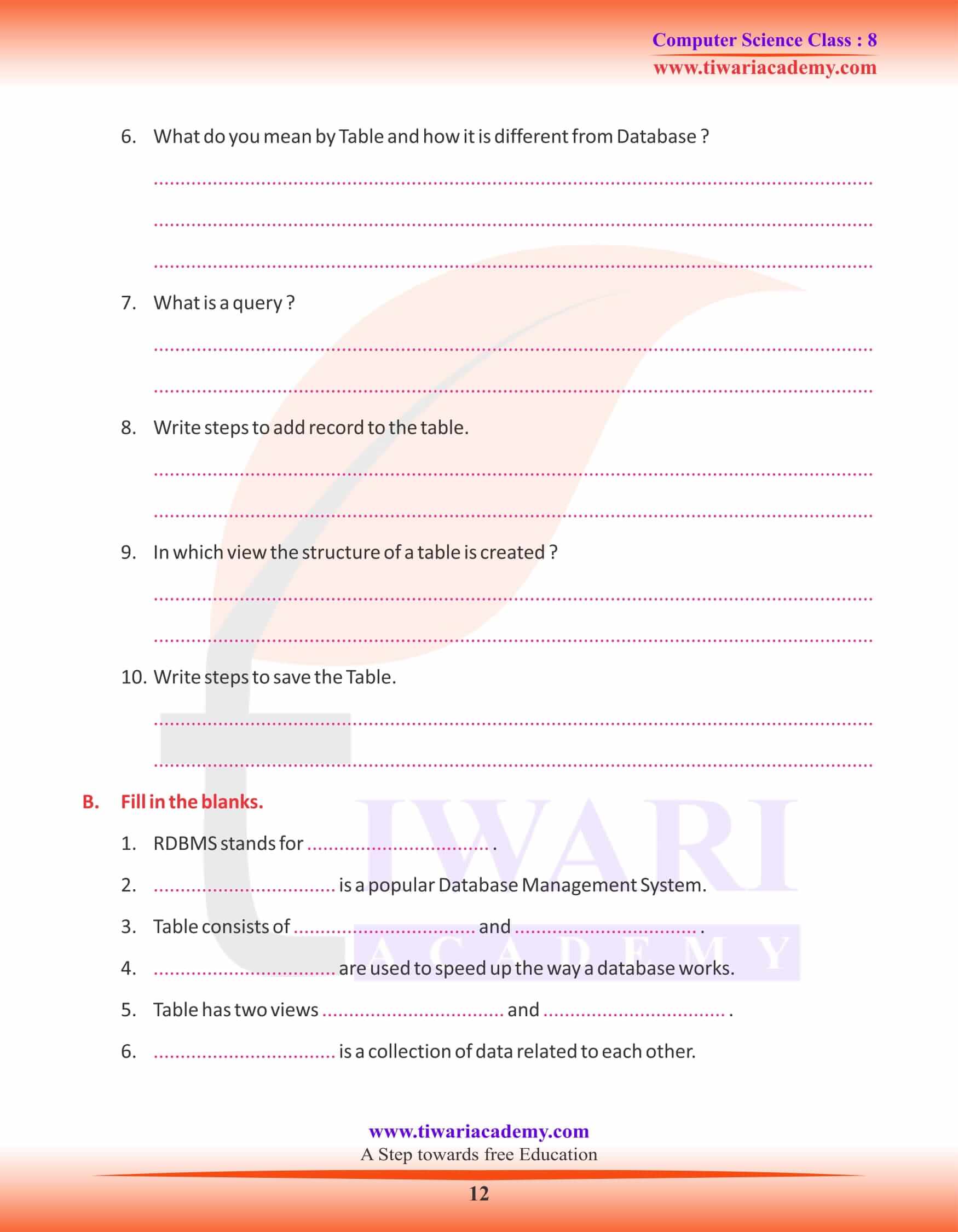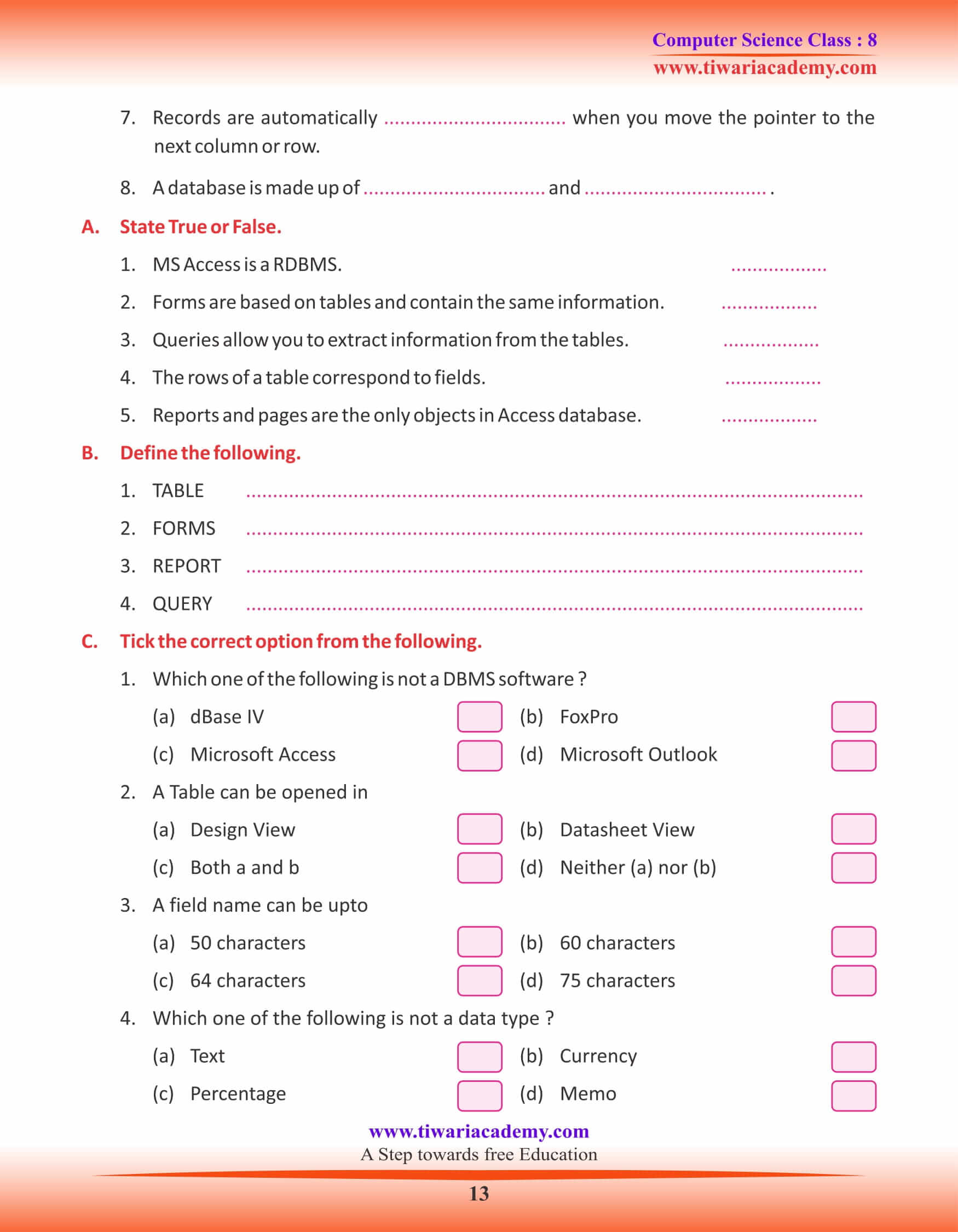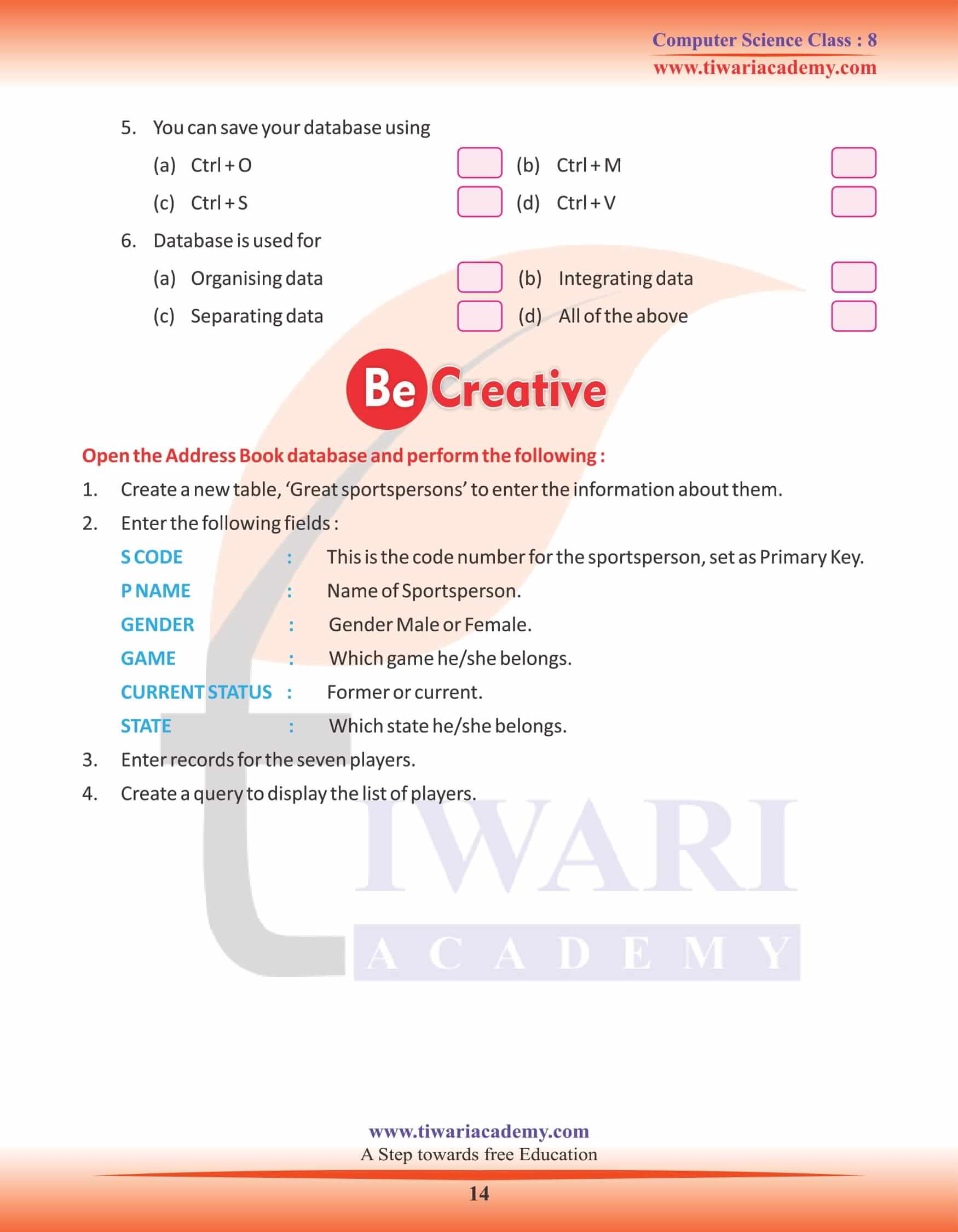NCERT Solutions for Class 8 Computer Science Chapter 3 MS Access- A DBMS updated for CBSE as well as State board students for session 2025-26. For the preparation of Grade 8 Computer book chapter 3, student can download worksheets and assignments.
Class 8 Computer Science Chapter 3 MS Access a DBMS
INTRODUCTION TO DATABASE
MS Access is a DBMS package developed by Microsoft. It is a part of MS-Office package. MS-Access is basically a Relational Database Management System (RDBMS). A RDBMS helps us to organise and process more than one Database at a time for any particular report. MS Access is widely used by small businesses, within departments of large corporations etc. for handling the creation and manipulation of data. For example, to generate the report card of the students in a school, both the student database and the marks database can be used. In another example, an address book can be a database where the name, address and telephone number of friends and business contacts are stored.
MS-Access can be used for creating everything from simple mailing list to a full featured school fee management system. In Microsoft Access, the data is arranged in form of tables. Every specific piece of information in a table is known as a value.
Data Capturing
The process of collecting data is called data capturing. Different methods are used to collect data from a source.
Data Processing
After collecting data, there is need to process it to produce useful information. Data can be processed by classification, sorting and calculating. It is know as data manipulation.
Information Management
When data is processed, it gives useful information. It is also stored for future use.
Therefore, management of information is most important.
DATA PROCESSING SYSTEM
Different methods are used for processing the data. Some of them are as follows:
Batch Processing
In this method, data is collected for a predetermined period of time, after which it is processed.
Online Processing
It is used when delay in data handling is not applicable. It is to be done with immediate effect.
Time Sharing
It allows many users to work at the same time and access the same computer. It is an interactive process.
Remote Job Entry
When, computer operations require a special device to input data, it is known as remote job entry station. It allows transfer of data from a remote location to a distant computer system via various means such as telecommunication.
DATABASE
Database is a collection of related information. Database is a collection of data related to a particular topic or purpose. Phone directory is a simple example of database. Some advantages of database are mentioned below:
- Retrieving desired information easily
- Taking meaningful decision
- Reorganising information easy
- Processing information easy
- Data security
- Sharing of data easy.
Components of Database
In database, data is stored in a database file. Data may be arranged in tables related to one another. To find and retrieve data, queries are made. Every database contains records and each record is a collection of different types of information about the same subscriber.
Field: It is a single column or a unit in a table. Each field has a unique name. For example, the name of phone subscribers in phone directory can be stored in one field with a field name as ‘name’.
Record: A collection of related fields forms a record. It is a set of all data fields in a row. For example, name, address, telephone number together form the record of a particular subscriber.
Table: It is a collection of row (records) and columns (fields). A collection of related records form a table.
Table Structure: Before creating a table, we need to create a table structure. A table structure identifies the name, size and type of various fields.
Text Field: It contains letters, numbers and symbols. It can contain up to 255 charaters. For example, Sumit, L10B, DLS 7387, etc.
Numerical Field: It contains only numbers. It does not accept letters or other symbols. For example, 39, 40008, 48, etc.
Currency Field: It contains symbols for currency, decimals and commas, where needed. For example, ` 100.95, $85, 250, etc.
Date/Time Field: It contains date and time. For example (DD/MM/YY)28/08/2015, 08-09-2016, 06:05 am, etc.
Memo Filed: It contains long text with all kinds of data. For example, Hi! My name is Himanshu. I am 13 years old.
Logical Field: It contains character to represent ‘Yes’ or No’, ‘True’ or ‘False’, ‘right’ or ‘wrong’.
TO CREATE A BLANK ACCESS DATABASE
To create a Blank Database, follow the steps given below :
Click on Office button and choose New option. A new file task pane appears. In the New File Task Pane, click Blank Database. A File New Database dialog box will appear. Type required name and click the Create button.
Finally the Database window appears with a list of the objects (table, forms, reports and
other items).
QUERIES
Query is a question based on some condition on the tables. You can create any query, open a new query or modify any query using the buttons on the database Window. Queries allow you to extract information from the tables.
New report, modify the report which is in use and open the report by using buttons on the database window.
PAGES
It displays all the short-cuts to data access pages in the current database. Pages are used for adding editing or viewing data on the tables but are printed as web pages.
MACROS
Macros are used to speed up the way a database works, e.g., you could create a macro which automatically starts your database on a specific form.
MODULES
Modules have the same function as macros. They allow you to write small programs which can run within Access to speed up your work.
